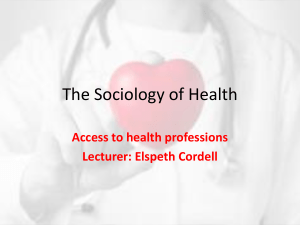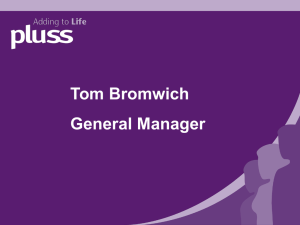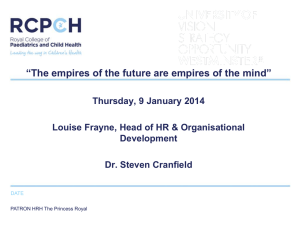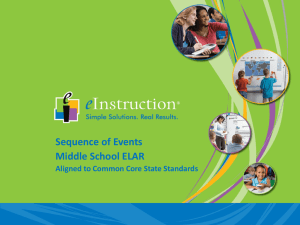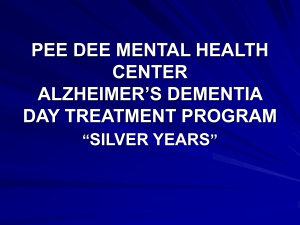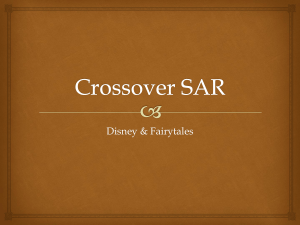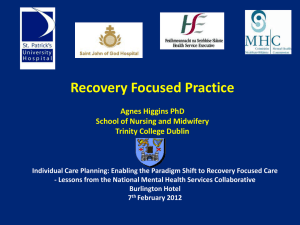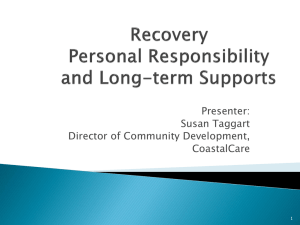Psychiatric History and Mental Status Examination
advertisement
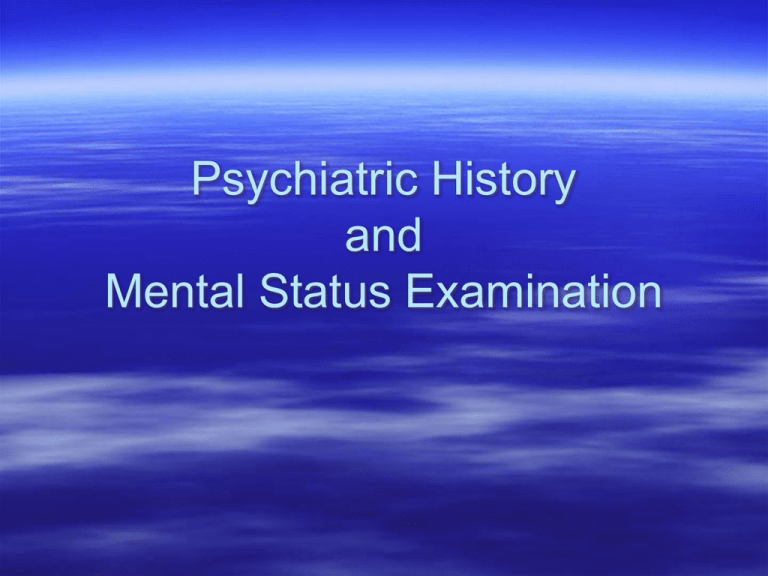
Psychiatric History and Mental Status Examination Psychiatric History Identifying Data Chief Complaint History of Present Illness Previous illness Personal History (Anamnesis) Identifying Data Name Age Marital Status Occupation Ethnic Background Religion Current Circumstances of Living Source of information; Reliability Chief Complaint Should be written in the patient’s own words stating why he/she has come or been brought in for help It should be written in verbatim; no matter how absurd, illogical, irrelevant or bizarre it is. The accompanying person or relative’s complaint should also be taken into account. History of Present Illness A comprehensive and chronological picture of the events leading up to the current moment in the patient’s life. Onset, precipitating factors/events, personality type Evolution of the patient’s symptoms, how illness affects patient’s life, nature of dysfunction Previous Illness Past episodes of both psychiatric and medical illnesses Causes, complications, treatment, the effects of the illness on the patient’s life Alcohol and other substance abuse; quantity and frequency Personal History Patient’s past life and its relationship to the present emotional problem The predominant emotions associated with the different life periods should be noted 1. 2. 3. 4. 5. 6. 7. 8. Pre-natal and perinatal history Early childhood (0-3 yo) Middle childhood (3-11 yo) Late childhood (puberty-adolescence) Adulthood Psychosexual history Family history Dreams, fantasies and values Mental Status Examination Describes the sum total of the examiner’s observations and impressions of the psychiatric patient at the time of interview 1. 2. 3. 4. 5. 6. 7. 8. General Description Mood and Affect Speech Perceptual Disturbances Thought Disturbances Sensorium and Cognition Impulse Control Judgment and Insight General Description Appearance: posture, poise, clothing grooming – Body type, hair, nails – Healthy, sickly, ill at ease, poised, odd looking, young-looking, disheveled, childlike, bizarre – Signs of anxiety Behavior and psychomotor activity: – Quantitative and qualitative aspects of the patient’s motor behavior – Mannerisms, tics, gestures, twitches, stereotyped behavior, echopraxia, hyperactivity, agitation, combativeness, flexibility, rigidity Attitude toward examiner: – Cooperative, friendly, attentive, interested, frank, seductive, defensive, hostile, playful, evasive, guarded – Level of rapport Mood and Affect MOOD: pervasive and sustained emotion that colors the patient’s perception of the world – Depressed, despairing, irritable, anxious, angry, expansive, euphoric – Maybe labile AFFECT: patient’s present emotional responsiveness – Normal range, constricted, blunted, flat Appropriateness of the patient’s response to the context of the subject matter the patient is discussing Speech Physical character of speech Quantity, rate of production, quality Talkative, garrulous, unspontaneous Rapid, slow, pressured, hesitant, dramatic, monotonous, loud, whispered Impairment of speech: stuttering Perceptual Disturbances Hallucinations Illusions Depersonalization, derealization Formication Thought Disturbances THOUGHT PROCESS (Form of thinking): a way in which a person puts together ideas and associations Loosening of association, derailment, flight of ideas, racing thoughts, tangentiality, circumstantiality, word salad, neologisms, clang association, blocking, relevant/irrelevant CONTENT OF THOUGHT – Delusions, preoccupations, obsessions, compulsions, phobias, suicidal or homicidal ideas – Delusions: fixed false beliefs Mood in/congruent Persecutory/paranoid, grandiose, jealous, somatic, erotic, nihilistic Sensorium and Cognition Assesses organic brain functioning, intelligence, capacity for abstract thought, level of insight and judgment 1. Alertness and level of consciousness 2. Orientation 3. Memory 4. Concentration and Attention 5. Capacity to Read and Write 6. Visuospatial ability 7. Abstract Thinking 8. Fund of Information and Intelligence Impulse Control Critical in ascertaining the patient’s awareness of socially appropriate behavior A measure of the patient’s potential danger to self and others Judgment and Insight JUDGMENT: patient’s capability for social judgment – Imaginary situations INSIGHT: patient’s degree of awareness and understanding that they are ill Levels of Insight Complete denial of illness Slight awareness of being sick & needing help but denying it at the same time Awareness of being sick but blaming it on others, on external factors, or on organic factors. Awareness that illness is due to something unknown in the patient Intellectual insight True emotional insight Reliability Estimate of the psychiatrist’s impression of the patient’s truthfulness or veracity
